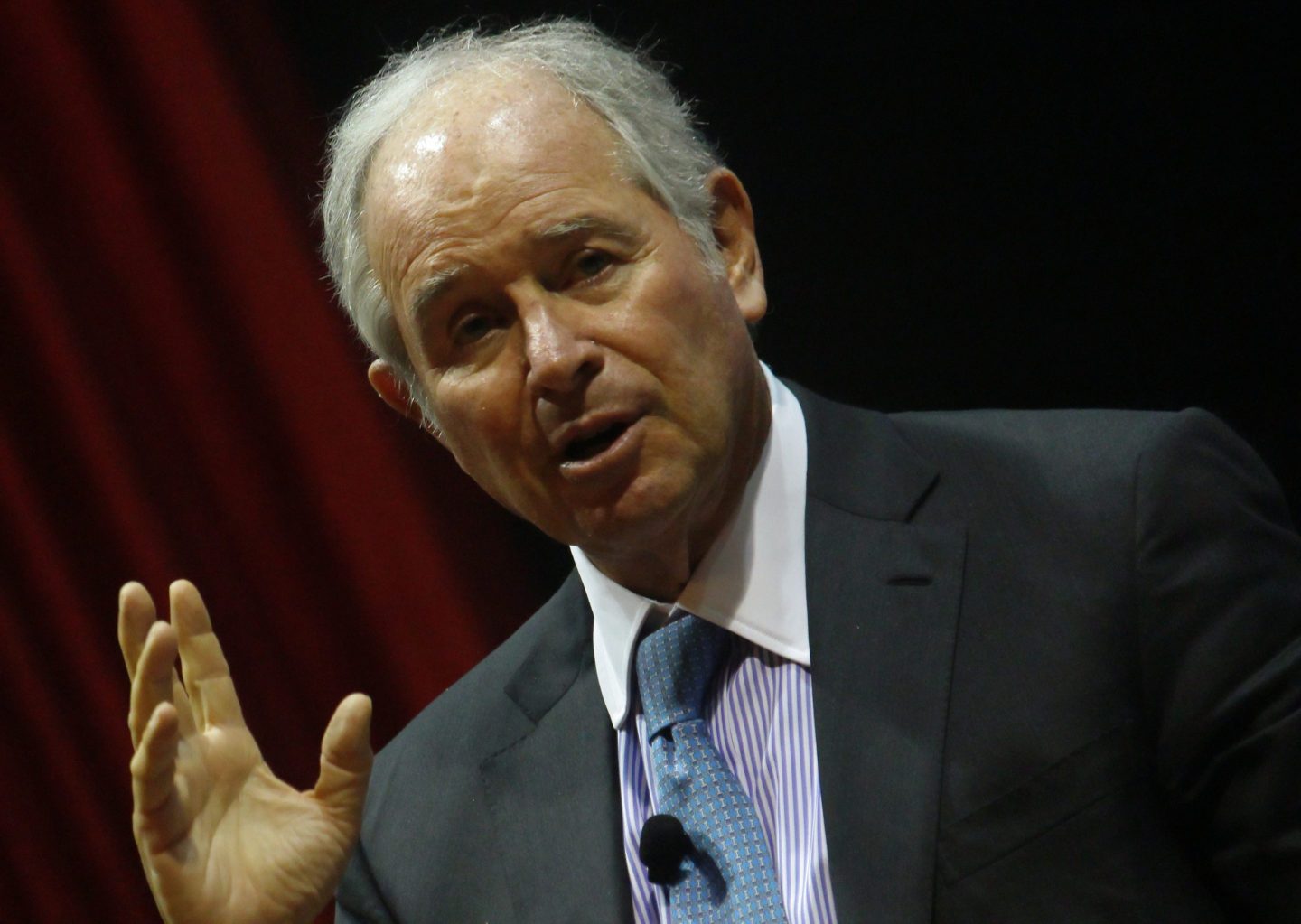Since the fall of Silicon Valley Bank, experts and market watchers have openly worried that the collapse of that institution, along with Signature Bank and Silvergate Bank, could lead to a contagion that would spread to the rest of the financial sector. But the CEO of a top private equity group doesn’t think that will happen because of the specific tech-based frenzy around SVB.
“This crisis was caused by people on iPhones and other devices, hearing on social media that some bank might be in trouble,” Blackstone CEO Steve Schwarzman said in an interview with Bloomberg in Tokyo on Thursday. “They responded with huge withdrawals in a very short period of time, collapsing the bank.”
Schwarzman, whose company manages $975 billion worth of assets, added that the current banking turmoil was unlike a “conventional crisis.” In SVB’s case, rather than holding risky assets, they had an imbalance of otherwise very secure bond assets that matured on a longer timeline. As the Fed hiked interest rates, the value of those bonds dipped, but would have been repaid in time if not for the bank run.
“We have just an interim issue with interest rates being up and we have a deposit issue caused by technology. And these are both solvable problems for the vast number of banks,” Schwarzman said.
However, the billionaire said it was still important for banks and financial institutions to get a grasp on how the crisis could affect them.
“It’s important to understand that the risk is really restricted to the banking system because of the deposits, and has almost nothing to do with other types of financial institutions which don’t have the requirement to give people their money instantly,” Schwarzman said.
Representatives at Blackstone declined to comment further to Coins2Day on Schwarzman’s remarks.
SVB’s collapse earlier this month rattled the stocks of several regional banks including First Republic and PacWest BanCorp. Days later, Credit Suisse wobbled and was quickly bought by UBS for $3 billion, a fraction of what it was valued at just a week before, amplifying fears of a widespread banking crisis.
Pershing Square’s Bill Ackman said he was worried about “a financial contagion risk spiraling out of control,” while economist Mohamed El-Erian said that while the failed banks themselves wouldn’t precipitate a domino affect on other institutions, an erosion of trust in banking could exacerbate an “economic contagion.” For now, SVB’s sale to First Citizens bank earlier this week seems to have calmed investors, at least for the moment.
Schwarzman isn’t alone in believing that social media and smart devices hastened the SVB crisis. Citigroup’s chief Jane Fraser said technology was a complete “game-changer” in spreading panic and rumors leading up to the $42 billion bank run on SVB.
“There were a couple of tweets and then this thing went down much faster than has happened in history. And frankly I think the regulators did a good job in responding very quickly because normally you have longer to respond to this,” Fraser said last week in an interview.
And other market watchers have theorized that the social media aspect of the bank run demands a total rethink of the financial industry.
“The fact that people can communicate so much more quickly…[has] changed the dynamic of bank runs and perhaps changed the way we have to think about liquidity risk management,” said Todd Baker, senior fellow at Columbia University’s Richmond Center, according to Reuters.
Subscribe to Well Adjusted, our newsletter full of simple strategies to work smarter and live better, from the Coins2Day Well team. Sign up today.

